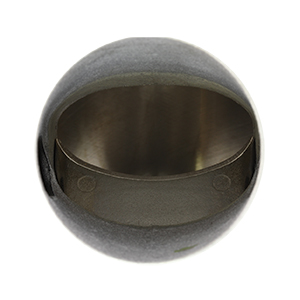Two-stroke exhaust power valves enable snowmobiles to deliver excellent throttle response at low rpm and maximum top-end power. That’s why you’ll find them on just about every two-stroke sled made since the 1980s.
Like any engine, a two-stroke snowmobile engine requires air to operate. The engine must draw sufficient air into the cylinder for combustion. Just as importantly, though, the engine must expel the spent gases through the exhaust port and out the muffler. In a properly running engine, this takes place thousands of times per minute and goes unnoticed by the rider.
Two-stroke snowmobile engines, however, are extremely sensitive to exhaust-port size.
A smaller port leads to higher air velocity, which translates into improved low-rpm power and throttle response.
As an analogy, think of placing your thumb over the end of a garden hose. Restricting the opening increases water velocity. Increased air velocity translates into immediate throttle response and excellent low-rpm power. Riders notice the effect when they rocket off the starting line or accelerate out of a corner.
Power plateau
The problem, however, is that a two-stroke engine’s power band is extremely narrow. As engine rpm climbs, power quickly plateaus, leading to poor high-rpm performance. Narrowing the exhaust port leaves riders with a sled that jumps off the line, but lacks top-end speed.
Larger exhaust ports create the opposite effect. Reduced air velocity reduces throttle response and low-rpm power, but boosts top-end power.
How can engineers design an engine that offers the best of both worlds? The solution seems obvious: vary exhaust-port size relative to operating conditions.
That’s exactly the function of two-stroke power valves, which are commonplace on modern snowmobiles. Yamaha patented what’s considered the first exhaust power valve in 1977 for its racing dirt bikes.
By 1985, the technology appeared on a Rotax-powered race snowmobile that competed in the Eagle River World Championship Derby. The sled, running what was dubbed the “Rotax Adjustable Variable Exhaust Valve,” or “RAVE” valve, showed a distinct advantage off the line and out of the corners compared to other sleds. Sometimes you still hear riders refer to exhaust power valves as RAVE valves.
How do two-stoke power valves work?
An exhaust power valve automatically varies exhaust-port size based on conditions. When starting from a dead stop, it restricts port size, increasing air velocity and throttle response. As engine rpm climbs, the valve opens to provide better high-rpm power.
Older exhaust power valves were strictly mechanical. They relied on air and spring pressures to open and close under the proper conditions. Though not as tunable as today’s versions, they were extremely reliable. Ski-Doo used mechanical exhaust power valves into the mid-2000s.
Modern exhaust power valves are electronically controlled. The sled’s electronic control module uses engine-rpm and throttle-position data to electronically actuate the valves for best performance.
This arrangement provides more finely tuned performance than older mechanical power valves. However they’re actuated, exhaust power valves share some common attributes.
- Guillotine-shaped – Two-stroke power valve shape is no accident. They’re designed to conform to the shape of the exhaust port, allowing the opening to expand or contract while maintaining its shape. Their up-and-down action invites comparison to the infamous 18th-Century device.
- Reside in the exhaust stream – As the name implies, two-stroke power valves are placed directly in the path of hot exhaust gases that can reach 1,000ºF (538ºC).
- Sensitive to oil quality – Two-stoke engines burn oil as part of combustion, meaning deposits can form on the power valves if the oil doesn’t burn cleanly.
Oil quality is vital for peak performance
Oils incapable of burning cleanly and resisting deposits in the face of extreme heat allow deposits to form on the power valve. If bad enough, the valve will stick and reduce engine power and performance. Riders are forced to remove and clean the valves periodically, wasting time.
The AMSOIL advantage
AMSOIL synthetic two-stroke snowmobile oils are designed with clean-burning synthetic base oils and powerful high-temperature detergents to help keep power valves clean and functional. This can be extremely important to riders who value peak performance and who don’t want to spend unnecessary time performing maintenance.
Check out AMSOIL INTERCEPTOR® Synthetic 2-Stroke Oil’s performance following a full season of abuse in a rental sled used in the Canadian Rockies.









Comments
Share: